Botox Injection Training – Live Online & Interactive

Skip To Training Course Details >>

You want to increase your clientele, but your resources are limited, your time especially so. Adding new services in order to acquire new patients usually involves a significant investment in equipment and training. We understand and we want to help. This year, according to Google, more than 246,000 searches are done for information on Botox every month. Botox typically isn’t covered by insurance, so individuals seeking Botox Injections have the disposable income to pay for it. No anti-aging treatment offers results as quickly or as long lasting as Botox. This is why Botox is the most widely sought after anti-aging treatment in the United States.
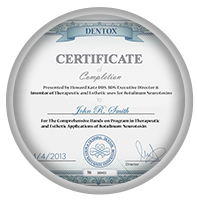 Our Botox training doesn’t stop at teaching you how to administer Botox injection, we also teach you how to explain the benefits of treatment to your prospective patient and how to turn your patients into huge fans that will recommend you to everyone they know.New injectable products are being approved all the time, and injectable products are consistently being approved for new uses. This is why is it so important to make certain you find a course that teaches the most current FDA approved as well as off-label treatments for both aesthetic and therapeutic uses and how they should be used with dermal fillers. Many Botox injection training courses will get you qualified, but our course will offer you added credibility. Course director Dr. Howard Katz is named on the patents for all current Botulinum toxin products. The course is offered online, but on successful completion, you will receive a certificate of completion from Dr. Katz himself.
Our Botox training doesn’t stop at teaching you how to administer Botox injection, we also teach you how to explain the benefits of treatment to your prospective patient and how to turn your patients into huge fans that will recommend you to everyone they know.New injectable products are being approved all the time, and injectable products are consistently being approved for new uses. This is why is it so important to make certain you find a course that teaches the most current FDA approved as well as off-label treatments for both aesthetic and therapeutic uses and how they should be used with dermal fillers. Many Botox injection training courses will get you qualified, but our course will offer you added credibility. Course director Dr. Howard Katz is named on the patents for all current Botulinum toxin products. The course is offered online, but on successful completion, you will receive a certificate of completion from Dr. Katz himself.
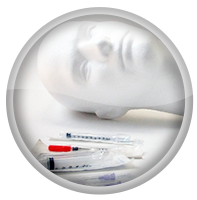 You’re probably wondering how in the world you can learn to administer Botox injection over the internet. Prior to the course, you will receive a kit that includes a foam head along with all of the needles and syringes needed. Throughout the course, the instructor will demonstrate each treatment, showing the placement, angle and depth from multiple angles. You will inject the foam head in the same manner and submit photos of each. We will assess the location, angle, depth and dose of each and either verify the accuracy of your technique or coach you on how to improve. Once you have correctly demonstrated accurate technique for all treatments, we will send your certificate.
You’re probably wondering how in the world you can learn to administer Botox injection over the internet. Prior to the course, you will receive a kit that includes a foam head along with all of the needles and syringes needed. Throughout the course, the instructor will demonstrate each treatment, showing the placement, angle and depth from multiple angles. You will inject the foam head in the same manner and submit photos of each. We will assess the location, angle, depth and dose of each and either verify the accuracy of your technique or coach you on how to improve. Once you have correctly demonstrated accurate technique for all treatments, we will send your certificate.
 During the course, you will watch the class in high definition from a computer, tablet or smartphone and you’ll be able to talk to the instructor just as you would if you were right there in the classroom. You don’t have to be a computer expert to attend. If you can send an email or surf the internet, you’ll have no trouble. When you sign up, you’ll receive an email with a link to the class. As you watch the class, type any questions you may have into the chat box. Use the camera on your computer, or any other digital camera to take pictures of your technique and upload them.
During the course, you will watch the class in high definition from a computer, tablet or smartphone and you’ll be able to talk to the instructor just as you would if you were right there in the classroom. You don’t have to be a computer expert to attend. If you can send an email or surf the internet, you’ll have no trouble. When you sign up, you’ll receive an email with a link to the class. As you watch the class, type any questions you may have into the chat box. Use the camera on your computer, or any other digital camera to take pictures of your technique and upload them.
Maybe you’re still skeptical. One notable advantage to taking a course online is that you still have access to all of the recorded lectures and other course material anytime, day or night. Missed something? Still not quite clear on something? Just got lost at some point and don’t feel as comfortable as you’d like with the procedure? Not a problem. Go back and rewatch the class as much as you want whenever you want. Of course, there’s also the fact that you don’t have travel costs or time away from the office and online Botox injection training becomes rather attractive.
Need more reasons to consider our Botox Injection Training course?

- You can ask questions of Dr. Katz after the class is over, or consult with him on treatment plans for specific patients. Send photos of the patient and he will respond within 24 hours.
- If you live near San Diego or plan on visiting you may attend semi-private hands on classes anytime, for free.
- Get a discount on any of our live patient Dentox programs.
- Receive priority access to all new courses and webinars.
- Receive AGD continuing education credit. Many Botox injection training courses do not offer this.
This course is intended for doctors, nurses and other healthcare professionals. State laws vary as to what specific professions are allowed to administer Botox. Be sure you will be eligible to administer Botox before signing up. Along with online Botox injection training, we also offer local in-person classes. If you have taken the online course, the cost will be deducted from the live class. We also offer private consultation in our office.
When you sign up for Botox injection training, you’ll not only receive the foam head, syringes and needles, you’ll also receive detailed information on pricing on all of the various Botox products and alternative products such as Juvederm and Restylane and when these products are preferable to Botox. You’ll also receive information on how to earn the kind of loyalty from your clients that has them raving about you. It’s our goal that you not only gain proficiency with with products, but that you are also able to develop a loyal following. You will also receive manuals, a list of resources and sample forms.

Treatment with Botox takes only a few minutes and requires no recovery time, many patients stop in for it over their lunch hour. Results are apparent in three to ten days and last three to four months, longer with repeated use. Botox injection is safe and carries few side effects, which are typically mild and temporary.
Our goal is to provide comprehensive training that you can easily integrate seamlessly into your existing practice. By the time you finish the course, you will know:
- The history of Botox as well as how to prepare it and how it works
- When to use Botox and when to use dermal fillers
- Indications and contraindications of Botox
- Facial anatomy and physiology, particularly in terms of aesthetics
- Differences between the various products and how to use them in various circumstances
- Different types of dermal fillers
- Proper techniques for every use of Botox
- How to conduct patient consultations
Course participants gain both extensive knowledge of aesthetic practice, and continued education credit.

Why not revitalize your practice with new, affluent patients?
The Rise of Male Aesthetics: Exploring Modern Trends


Men are increasingly seeking cosmetic procedures to seem younger and more refreshed.
In modern aesthetics, an increasing number of men are venturing into the realm of cosmetic procedures in pursuit of a more youthful and revitalized appearance. Among the myriad options available, Botox and dermal fillers reign supreme as sought-after solutions for addressing deep lines, wrinkles, and facial volume loss. So, what are the prime choices for men seeking to refine their aesthetic appeal? Let’s delve into the details.
Firstly, it’s crucial to discern between Botox and dermal fillers. Botox, scientifically known as botulinum toxin, operates by temporarily paralyzing the muscles responsible for the formation of wrinkles. It is particularly adept at targeting dynamic wrinkles resulting from muscle movements like frowning or squinting. On the contrary, dermal fillers consist of injectable substances designed to restore volume in areas afflicted by aging-induced volume loss. They serve to fill in deep lines and revitalize facial volume.
Now, where are these treatments commonly directed? Men typically opt for injections in areas such as the forehead to address horizontal lines, the frown lines between the eyebrows (often referred to as “11” lines), the notorious crow’s feet around the eyes, deep lines around the nose and mouth (known as nasolabial folds), and even areas like the cheeks and jawline to achieve a more sculpted appearance.
Let’s dissect some prevalent treatments for men
Botox: This marvel, primarily composed of botulinum toxin, effectively combats wrinkles by inhibiting muscle contractions. It reduces facial lines, particularly on the forehead, between the eyebrows (glabellar lines), and around the eyes (crow’s feet). Botox induces muscle relaxation by blocking nerve signals, imparting a refreshed and youthful aura.
Hyaluronic Acid Fillers: These hydrating agents brim with hyaluronic acid to add volume, smooth wrinkles, and enhance facial contours. They are adept at treating deep facial wrinkles, such as smile and marionette lines, and are instrumental in augmenting areas like the cheeks and lips.
Calcium Hydroxylapatite Fillers: Injecting volume and promoting collagen formation for improved skin elasticity, these fillers play the role of masterminds in the face rejuvenation process. They confer long-lasting results, contributing to a radiant glow over time.
Poly-L-Lactic Acid Fillers: Embraced by men seeking to boost collagen production, these fillers gradually smooth deep facial wrinkles and restore volume. Patience is key with these agents, as results progressively manifest over several months.
Why should men consider Botox and fillers?
Dermal fillers serve as the elixir of youth, replenishing lost volume and smoothing out lines, with results lasting from several months to over a year. Customized treatment plans ensure natural-looking outcomes that preserve masculine features.
Botox is instrumental in mitigating dynamic wrinkles while maintaining masculine expressions. Its quick and convenient nature and minimal downtime make it ideal for busy individuals.
However, it’s imperative to acknowledge the associated risks. From potential injection site reactions to the risk of infection or allergic reactions, caution is warranted. Botox treatments may precipitate temporary muscle weakness or spasms, while fillers could yield lumps or migration if not administered meticulously. Consulting a qualified provider is paramount to navigating these risks and achieving desired outcomes.
Dentox is a training course that teaches medical professionals how to tailor a treatment plan to your specific needs to inject dermal fillers and Botox to give you the results you desire. Reach out to Dr. Howard Katz for more information regarding Dentox programs.
See https://dentox.com/all-courses/dermal-fillers/ and https://dentox.com/all-courses/botox-training/ for dependable training programs. These will give you the tools to succeed and inform you about what’s happening in your industry. Check out https://dentox.com/live-courses/ if you want to learn from real people in real-time.
Botox and filler treatments offer men a gateway to a more confident and youthful appearance. Whether aiming to reverse the effects of time or accentuate natural features, these treatments empower individuals to embark on their aesthetic journey with assurance. Remember, embrace your evolution, and always present your best self to the world!
Debunking Common Misconceptions Regarding Dermal Fillers: An In-depth Exploration


Dermal filler misperceptions can cause people to hesitate about these revolutionary cosmetic treatments.
Misconceptions surrounding dermal fillers often lead individuals to unwarranted fears and hesitations regarding these transformative cosmetic treatments. This comprehensive elucidation aims to dispel prevalent myths associated with dermal fillers while emphasizing their remarkable efficacy and safety. Understanding the realities behind these misconceptions is imperative for informed decision-making and harnessing the full potential of dermal filler interventions.
Myth 1: Dermal Fillers Equate to Botox
One of the prevailing misconceptions pertains to the interchangeable nature of dermal fillers and Botox. Despite their frequent association, these treatments exhibit distinct mechanisms of action and target different cosmetic concerns. Botox, a neurotoxin, functions by inhibiting muscle contractions to diminish wrinkles, whereas dermal fillers volumize tissues beneath the skin’s surface, imparting a rejuvenated appearance.
Reality: A thorough comprehension of the differences in action and treatment goals between dermal fillers and Botox is necessary because both are separate procedures developed to address specific cosmetic needs.
Myth 2: Permanence of Dermal Fillers
A common misconception about dermal fillers is that they are permanent, which can make people afraid that their appearance will be permanently altered after treatment. Unfortunately, a common misconception is that filler injections cannot be reversed.
Reality: The length of the effects of dermal fillers depends on a number of factors, including the filler’s composition, the injection site, and the individual’s metabolism, although, contrary to common assumptions, they are transitory procedures. Fillers made of hyaluronic acid usually last between six and eighteen months.
Myth 3: Dermal Fillers Result in Dramatic Transformation
Another common misunderstanding is that dermal filler treatments will cause noticeable changes to the face. The idea that fillers will make people look unnatural or unrecognizable is terrifying to many others.
Reality: Expert medical practitioners can use dermal fillers to subtly amplify a person’s natural features while highlighting their distinctive facial traits. The ultimate goal is to fine-tune the treatment of aging or flaws proportionally and harmoniously.
Myth 4: Dermal Fillers Only Target Wrinkles
A common misperception confines the utility of dermal fillers solely to wrinkle reduction, overlooking their multifaceted applications in volumetric augmentation and structural enhancement. While wrinkles are a primary concern, dermal fillers cater to a spectrum of cosmetic issues beyond mere line attenuation.
Reality: Dermal fillers serve as versatile treatments for facial rejuvenation, encompassing augmentation of cheek volume, refinement of the jawline, correction of under-eye hollows, and enhancement of lip contours. Additionally, they can be employed for non-surgical nasal reshaping, extending their utility beyond traditional wrinkle management.
Dispelling Exaggerated Risks Associated with Dermal Fillers
While all medical procedures entail inherent risks, exaggerated apprehensions regarding the safety profile of dermal fillers often overshadow their favorable risk-benefit ratio. These therapies are known to be safe when given by trained professionals, yet people may be afraid of the potential side effects and avoid them.
Reality: Dermal fillers are safe for patients when administered by professionals who know what they’re doing. The majority of side effects, including injection site redness, swelling, or bruising, are relatively minor and go away on their own. Compliance with rigorous safety measures and anatomical expertise further reduces the possibility of problems, guaranteeing the best possible patient results.
Democratizing Access: Dermal Fillers Across Age Groups
An entrenched misconception restricts the utilization of dermal fillers to older individuals grappling with visible signs of aging, thereby overlooking their preventive potential in younger demographics.
Reality: Many younger generations are turning to dermal fillers as a preventative approach against the visible signs of aging. The importance of filler treatments as preventative measures is shown by the fact that they can help maintain skin elasticity and postpone the beginning of age-related changes when started in one’s twenties or thirties.
Conclusion
In conclusion, debunking prevalent myths surrounding dermal fillers is essential for fostering informed decision-making and empowering individuals to embrace these treatments confidently. By elucidating the realities behind common misconceptions, we highlight the transformative potential of dermal fillers for enhancing natural beauty and restoring youthful vitality. As advocates of evidence-based cosmetic interventions, we endeavor to dispel unwarranted fears and promote a nuanced understanding of dermal fillers as invaluable facial rejuvenation and enhancement treatments.
Getting injections from a trained professional is your best bet for a risk-free and effective procedure. The well-being of the patients and the success of the treatments they receive are paramount for healthcare providers. Also, a trained filler injector will usually create a unique treatment plan just for you to ensure the results last. Furthermore, consulting with an experienced injector can lessen the likelihood of complications associated with dermal fillers. Putting money into better options can provide outcomes that look natural and give you peace of mind.
The goal of the Dentox program is to educate medical practitioners on how to inject dermal fillers to minimize discomfort and maximize the speed with which patients recover. If you would like to get more information about Dentox, you can consult with Dr. Howard Katz.
Go over https://dentox.com/all-courses/dermal-fillers/ if you want to enroll in a top-notch training program. By participating, healthcare providers can acquire the skills they need to thrive in their careers and keep up with the newest developments in their sector. Anyone interested in engaging in live classes with actual patients can visit https://dentox.com/live-courses/.
When Should You Schedule Your Botox Treatment?


Deciding when it’s time for Botox appointment is a personal choice based on lifestyle factors, aesthetic goals, and personal preferences.
In today’s world, where appearance often plays a significant role in how we perceive ourselves and others, maintaining a youthful and vibrant appearance is a priority for many. As we age, lines and wrinkles inevitably begin to appear, serving as visible reminders of the passage of time. Botox has emerged as a popular and effective solution for those seeking to combat these signs of aging. But how do you know when to schedule a Botox appointment? In this comprehensive guide, we’ll explore the signs that indicate it may be time to consider Botox treatment.
Signs It’s Time for a Botox Appointment
Visible Lines and Wrinkles: One of the most obvious signs that it’s time for a Botox appointment is the presence of visible lines and wrinkles, particularly in areas of repetitive muscle movement, such as the forehead, between the eyebrows (glabellar lines), and around the eyes (crow’s feet). These lines and wrinkles may become more pronounced over time, making them increasingly noticeable and bothersome.
Dynamic Wrinkles: Dynamic wrinkles are lines and wrinkles that appear when you make facial expressions, such as smiling, frowning, or raising your eyebrows. Over time, these dynamic wrinkles can become etched into the skin, even when your face is at rest. If you notice that your dynamic wrinkles are becoming more noticeable or prominent, it may be a sign that it’s time for Botox treatment to prevent them from worsening.
Loss of Skin Elasticity: As we age, our skin gradually loses elasticity, becoming less firm and resilient. This loss of elasticity can contribute to the formation of wrinkles and sagging skin, particularly in areas like the cheeks, jawline, and neck. If you’ve noticed that your skin doesn’t bounce back as it once did and appears lax or droopy, Botox may help improve skin tightness and firmness.
Preventative Maintenance: Botox isn’t just for treating existing wrinkles—it’s also an effective preventative measure for delaying the onset of aging signs. Many individuals in their late 20s to early 30s opt for Botox as a preventive measure to minimize the formation of wrinkles and preserve a youthful appearance for longer. If you’re noticing the early signs of aging or want to address potential problem areas, scheduling a Botox appointment proactively can help you stay ahead of the curve.
Migraine or Excessive Sweating Relief: In addition to its cosmetic benefits, Botox is also FDA-approved for treating chronic migraines and excessive sweating (hyperhidrosis). If you suffer from frequent migraines or sweat excessively despite trying various antiperspirants or treatments, Botox injections may offer relief by blocking the nerve signals responsible for triggering migraines or stimulating sweat production.
Uneven Facial Symmetry: Facial asymmetry, where one side of the face appears differently, can be a source of self-consciousness for many individuals. Botox injections can help address facial asymmetry by relaxing specific muscles to create a more balanced and harmonious appearance. Whether you have asymmetrical eyebrows, lips, or jawline, a skilled injector can customize Botox treatment to enhance facial symmetry and restore confidence.
Boost in Confidence: Ultimately, deciding to undergo Botox treatment is personal and often goes beyond simply addressing lines and wrinkles. For many individuals, Botox serves as a confidence booster, helping them look and feel their best. Find out if your self-esteem is affected by visible signs of aging or facial imperfections. Scheduling a Botox appointment may provide the confidence boost you need to feel more comfortable and confident in your skin.

Your injector will evaluate your issues, discuss your aesthetic goals, and create a personalized treatment plan during your consultation.
Consultation and Treatment Process
If you identify with the signs mentioned above and believe it’s time for a Botox appointment, the first step is to schedule a consultation with a qualified injector. During your consultation, your injector will assess your concerns, discuss your aesthetic goals, and develop a customized treatment plan tailored to your unique needs and preferences.
On the day of your Botox appointment, your injector will carefully administer the injections using a fine needle to target the specific muscles responsible for your concerns. The procedure is quick and typically well-tolerated, with minimal discomfort and downtime. You may experience some mild bruising, swelling, or redness at the injection sites, but these side effects usually resolve within a few days.
Conclusion
Deciding when it’s time for a Botox appointment is a personal decision that depends on individual preferences, aesthetic goals, and lifestyle factors. Botox might be a safe and effective solution if you have visible lines and wrinkles that bother you, want to maintain your appearance, or want to address other issues like migraine headaches or excessive sweating. By recognizing the signs that indicate it may be time for Botox treatment and consulting with a skilled injector, you can take proactive steps to rejuvenate your appearance and restore your confidence.
Botox can make you look younger by smoothing out wrinkles and fine lines and increasing the volume of your skin’s natural glow. It can help reduce the appearance of wrinkles and other age-related issues. Working with a trustworthy provider can help you prepare for treatment and get the care you need. Contact a qualified Botox injector to discuss your treatment choices and schedule a consultation.
Dentox teaches medical and aesthetic professionals how to safely and successfully inject Botox. Our online learning choices allow you to study whenever it is most convenient. Find more details about our live courses at https://dentox.com/live-courses/ or our virtual botox training at https://dentox.com/all-courses/botox-training.
Exploring the Safety of Botox Administration in Breastfeeding Mothers


Understanding the effects of Botox on maternal and newborn health is crucial when considering it during breastfeeding.
The decision to undergo Botox treatment while breastfeeding is multifaceted, requiring a deep understanding of its potential impact on both maternal and infant health. Botox, derived from Clostridium botulinum, operates by inhibiting acetylcholine release at neuromuscular junctions, resulting in temporary muscle paralysis. Despite its widespread use in cosmetic and therapeutic realms, concerns regarding its safety in breastfeeding mothers have sparked discussions and examinations within the medical community. This article endeavors to shed light on the current evidence surrounding Botox administration during lactation, analyzing its potential risks and benefits to guide clinical decision-making.
Mechanisms of Botox
Botox, also known as onabotulinumtoxinA, acts as a potent neurotoxin targeting presynaptic nerve terminals. Upon injection, it binds to synaptic vesicle proteins within cholinergic nerve terminals, halting acetylcholine release. Consequently, neuromuscular transmission is disrupted, leading to localized muscle paralysis. This mechanism underpins Botox’s therapeutic efficacy in addressing various medical conditions, such as spasticity, dystonia, chronic migraine, and hyperhidrosis, and its cosmetic applications in diminishing facial wrinkles.
Post-injection, Botox undergoes absorption into the systemic circulation, with peak plasma concentrations typically attained within 24 to 48 hours. The neurotoxin is then disseminated to target tissues, where it elicits its pharmacological effects. Botox primarily undergoes metabolism by proteolytic enzymes and experiences rapid clearance from the bloodstream, with a half-life ranging from 1.6 to 3.6 hours in adults.
Safety Considerations for Botox Use in Breastfeeding Mothers
The safety of administering Botox during breastfeeding hinges on several critical factors, including its potential transfer into breast milk, the susceptibility of the infant to neurotoxin exposure, and the lack of long-term safety data in this population. While Botox is generally deemed safe when administered via recommended dosages and routes, concerns persist regarding potential risks to breastfeeding infants.
Available data on Botox transfer into breast milk suggests detectable trace amounts of the neurotoxin post-maternal injection. However, the clinical significance of this transfer remains ambiguous, as no reported adverse effects attributable to Botox exposure have surfaced in breastfeeding infants to date. Nevertheless, exercising caution is prudent, particularly in light of limited safety data and the possibility of off-label Botox use in cosmetic procedures during lactation.
Clinical Guidelines and Recommendations
Given the dearth of data on Botox use in breastfeeding mothers, clinical guidelines and recommendations regarding its safety and appropriateness in this cohort vary among professional organizations and healthcare providers. Both professional bodies underscore the importance of individualized risk-benefit assessments for Botox treatment during lactation.
Healthcare providers are encouraged to weigh factors such as the indication for Botox therapy, the severity of the underlying condition, and the infant’s age and health status when determining the suitability of Botox administration in breastfeeding mothers. Close monitoring of maternal and infant outcomes is advised, with particular attention to potential adverse effects or complications linked to neurotoxin exposure.
Conclusion and Future Directions
In conclusion, the safety of Botox administration in breastfeeding mothers remains an ongoing subject of research and discourse within the medical community. While limited data suggest trace amounts of Botox transfer into breast milk following maternal injection, the clinical implications of this exposure remain uncertain. Healthcare providers should diligently weigh the potential risks and benefits of Botox therapy in lactating women, taking into account factors such as the indication for treatment and the health status of the infant.
By enrolling in Dentox training program, healthcare providers can acquire hands-on experience and in-depth knowledge of Botox injection techniques, patient assessment, and safety protocols. Our comprehensive curriculum covers the fundamentals of facial anatomy and advanced injection strategies, ensuring practitioners are well-equipped to deliver safe, effective, and satisfying patient outcomes.
Visit https://dentox.com/all-courses/botox-training/ to find out about all the available online Botox training options. On the other hand, medical professionals who want to learn through practical experience can take advantage of fantastic prospects at https://dentox.com/live-courses/.
The Truth About Botox: Debunking the Myth of Forever Injections

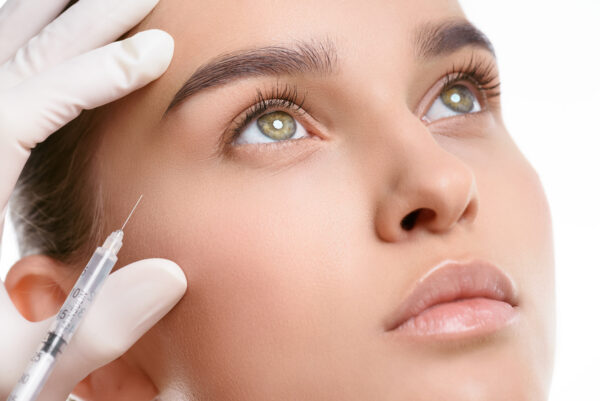
In most cases, the results of Botox last anywhere from three to six months.
Contemplating Botox injections often prompts a pertinent question: Will I need them forever? It’s a valid concern, especially for those venturing into the realm of cosmetic enhancements for the first time. The thought of committing to a treatment regimen indefinitely in terms of time and finances can evoke apprehension. But fear not—let’s demystify the notion of perpetual Botox injections and explore the realities behind this common query.
Understanding How Botox Works
Before delving into the longevity of Botox treatments, it’s essential to grasp how this renowned cosmetic procedure operates. Botox, derived from botulinum toxin, functions by impeding nerve signals to targeted muscles, thereby inhibiting their ability to contract. This muscle relaxation alleviates the appearance of wrinkles caused by repetitive facial movements, yielding a smoother, more youthful complexion.
The Duration of Botox Effects
Typically, the effects of Botox persist for a duration ranging from 3 to 6 months. However, this timeframe is subject to variation depending on things like each person’s metabolism, the treatment area, and the dosage used. As the effects gradually wane, muscle activity resumes, leading to the reappearance of lines and wrinkles.
Maintenance of Botox Results
To sustain optimal results, most individuals find it necessary to schedule Botox injections every 3 to 4 months. Yet, the narrative doesn’t end there. Long-term users often report an extension of the interval between treatments over time—a phenomenon attributed to the cumulative effect of muscle relaxation. The treated muscles weaken with consistent use, necessitating less frequent injections to maintain the desired smoothness. Additionally, Botox can prevent the formation of new wrinkles by mitigating muscle contractions—a practice colloquially referred to as “preventative Botox.”
The Consequences of Discontinuing Botox
Opting to cease Botox injections entails a gradual dissipation of the toxin’s effects, allowing muscle activity to resume naturally. Consequently, lines and wrinkles reemerge as the aging process resumes its course. However, discontinuing Botox does not exacerbate existing wrinkles or hasten the aging process; instead, it permits natural aging to progress from its previous state. Notably, Botox aids in preventing the worsening of wrinkles and inhibits the formation of new ones while undergoing treatment.
Long-Term Benefits of Botox
Scientific research and clinical experience affirm the safety and efficacy of Botox over extended periods of time. In addition to potentially necessitating less frequent treatments, prolonged Botox use may confer a preventative effect against the development of new wrinkles in treated areas, courtesy of reduced muscle activity.
The Freedom to Choose
For those contemplating the cessation of Botox treatments, rest assured that discontinuation poses no adverse consequences. While muscle activity resumes post-treatment cessation, the severity of lines and wrinkles is unlikely to surpass pre-treatment levels. In fact, the skin may fare better than if left untreated, owing to Botox’s preventative properties.
Embracing the Benefits of Botox
Given its widespread use, Botox unquestionably has outstanding anti-aging benefits. However, the notion of committing to lifelong injections need not induce anxiety. You retain the autonomy to discontinue treatments anytime without enduring long-term repercussions on your skin. Whether you’re contemplating Botox or seeking guidance on maintaining results, consult with our experts to address your queries and embark on your aesthetic journey with confidence.
When considering Botox treatment, selecting a provider with a proven track record of expertise and excellence in cosmetic procedures is paramount. Skilled healthcare professionals possess the knowledge and experience to safely and effectively administer Botox injections. Prior to undergoing treatment, it’s crucial to conduct thorough research on potential providers, read reviews, and schedule consultations to discuss your goals and expectations in depth.
Dentox offers an extensive training program designed to educate healthcare providers on the optimal procedures and techniques for administering Botox injections. Explore their comprehensive online and in-person training options at https://dentox.com/all-courses/botox-training/ and https://dentox.com/live-courses/ to empower healthcare professionals to improve patient outcomes and satisfaction. Dentox places utmost importance on patient safety, treatment efficacy, and holistic care, ensuring that patients receive the highest quality Botox treatments.
Deciphering the Relationship Between Microneedling and Botox: Clarifying the Facts
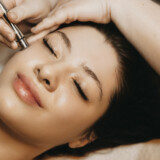
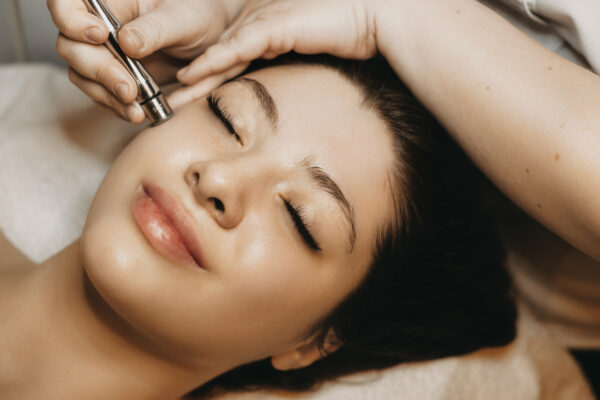
Microneedling should be done a week before Botox injections or two weeks afterward.
In the ever-expanding realm of skincare innovations, microneedling and Botox have emerged as stalwarts, each renowned for their ability to rejuvenate skin and enhance appearance. However, amidst the popularity of these treatments, a pertinent question arises: Does microneedling impact the effectiveness of Botox injections? To address this query, a deeper exploration of existing research and expert opinions is essential.
Microneedling: Understanding the Basics
It’s essential to understand the basics of microneedling before exploring the possible interaction between microneedling and Botox. In order to create controlled micro-injuries on the skin’s surface, a device with fine needles is used in this minimally invasive treatment. These tiny wounds trigger the skin’s innate healing process, which results in the synthesis of collagen and elastin, two proteins that are vital for preserving the firmness and elasticity of the skin.
Microneedling’s versatility in addressing various dermatological concerns, such as acne scars, fine lines, wrinkles, and hyperpigmentation, has solidified its status as a sought-after collagen induction therapy. Its ability to enhance skin texture and tone renders it a valuable tool for individuals seeking to rejuvenate their complexion.
The Microneedling-Botox Dilemma: Analyzing the Evidence
In recent years, speculation has arisen regarding the potential impact of microneedling on the efficacy of Botox injections. While anecdotal reports and isolated studies have fueled this discourse, a definitive consensus remains elusive within the scientific community.
One study suggested a potential decrease in Botox effectiveness when combined with microneedling, prompting concerns among skincare practitioners. However, caution is warranted when interpreting these findings, as the study’s limitations—including sample size and methodology—may not fully capture the intricacies of this relationship.
Despite these preliminary insights, it’s crucial to acknowledge the gaps in existing research and refrain from premature conclusions. The scientific literature on this subject lacks robust, well-designed studies that comprehensively evaluate the impact of microneedling on Botox efficacy, underscoring the need for further investigation to elucidate this complex interplay.
Guiding the Interaction: Expert Recommendations
Given the inconclusive nature of current research, skincare experts advocate for a prudent and strategic approach when combining microneedling with Botox. Careful consideration of treatment timing is paramount to optimize outcomes and minimize potential risks.
Based on expert consensus, scheduling microneedling sessions at least one week before Botox injections or waiting a minimum of two weeks after Botox administration is recommended. This temporal separation aims to maximize efficacy and safety, reducing the risk of unintended interactions between the two modalities.
Individuals can safely enjoy the advantages of microneedling and Botox if they follow the suggested schedule. In addition, it is crucial to build a personalized treatment plan that aligns with individual needs and goals by consulting with an experienced skincare practitioner.
Concluding Remarks: Navigating the Complexity
In the dynamic landscape of skincare advancements, the convergence of microneedling and Botox offers a promising avenue for achieving youthful, radiant skin. While uncertainties persist regarding their compatibility, a nuanced understanding of available evidence and expert guidance can inform informed decision-making.
As research continues to shed light on this intricate relationship, individuals are encouraged to approach the integration of microneedling and Botox with discernment and caution. By collaborating with trusted skincare professionals and staying informed, individuals can embark on a journey towards skin rejuvenation with confidence and clarity.
When contemplating Botox treatment, choosing a provider with a proven history of expertise and excellence in cosmetic procedures is imperative. Skilled healthcare professionals possess the knowledge and experience to safely and effectively administer Botox injections. Before undergoing treatment, it’s essential to research potential providers, peruse reviews, and schedule consultations to discuss your objectives and expectations thoroughly.
Dentox offers an extensive training program to educate healthcare providers on optimal procedures and techniques for administering Botox injections. Explore their online and in-person training options at https://dentox.com/all-courses/botox-training/ and https://dentox.com/live-courses/ to empower healthcare professionals in enhancing patient outcomes and satisfaction. Dentox prioritizes patient safety, treatment efficacy, and comprehensive care, ensuring patients receive the highest quality Botox treatments.
An In-Depth Reference for Optimal Botox Injection Safety and Results

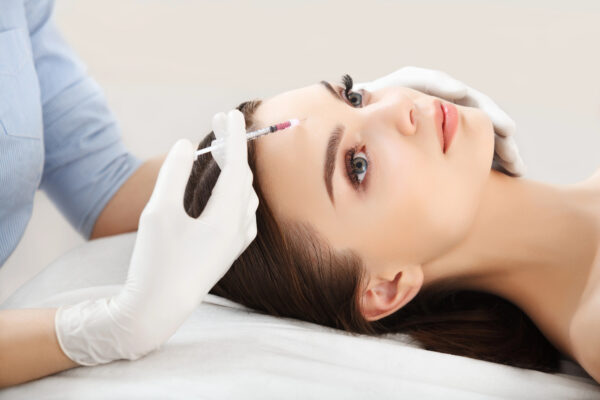
The use of Botox injections to smooth out wrinkles and creases on the face has become more popular in recent years.
Botox injections have grown in popularity in recent years as a means for people to lessen the appearance of facial wrinkles and creases. Cosmetic procedures utilizing Botox have a long history of safe and effective use. The bacterium Clostridium botulinum is responsible for producing the neurotoxic protein known as botulinum toxin, which is the substance’s source. The ability of Botox injections to provide noticeable results with minimal invasiveness and recovery time has led to their immense popularity.
How Botox Works
The action of Botox is to inhibit the transmission of nerve signals to the muscles, thus stopping the muscles from contracting. This movement causes the muscles to relax and the wrinkles to become less noticeable, resulting in the skin’s smoother appearance. Crow’s feet, forehead wrinkles, and frown lines between the eyebrows are some of the most popular regions treated with injections. The method is relatively quick and uncomplicated. Patients often experience signs of recovery anywhere from a few days to a week following treatment, and the effects of the treatment typically last for several months.
Benefits of Botox Injections
One of the primary advantages of Botox injections is their non-invasive nature, allowing patients to resume their daily activities immediately after the procedure. Unlike surgical options, Botox does not require lengthy recovery periods or leave visible scars, making it an attractive choice for those seeking a more youthful appearance without undergoing surgery. Additionally, Botox offers subtle yet effective results, enabling individuals to achieve natural-looking enhancements to their facial aesthetics.
Safety Considerations
Although Botox is generally considered a safe therapy when given by trained experts, it is vital to be cautious and only have skilled practitioners do the treatment. Muscle weakening, drooping eyelids, and uneven facial expressions are some of the adverse reactions that can result from Botox injections that are not delivered correctly. That is why it is so important to talk to a trustworthy professional who can determine if you are a good candidate for therapy and go over the pros and cons with you.
Choosing a Provider
When considering Botox treatment, selecting a provider with a proven track record of expertise and excellence in cosmetic procedures is vital. Qualified healthcare professionals are best equipped to deliver safe and effective Botox injections. Before undergoing treatment, take the time to research potential providers, read reviews, and schedule consultations to discuss your goals and expectations thoroughly.
Dentox provides an extensive training program to educate healthcare providers on the best procedures and techniques to administer Botox injections. Check out https://dentox.com/all-courses/botox-training/ and https://dentox.com/live-courses/ for online and in-person training options to help healthcare professionals enhance patient results and satisfaction. Dentox trains medical professionals to prioritize patient safety, treatment efficacy, and care to ensure their patients receive the best Botox treatments possible.
Conclusion
In conclusion, Botox injections provide a solution that is both convenient and effective in decreasing the appearance of wrinkles and fine lines without the need for individuals to undergo surgical procedures. When used correctly by trained professionals, Botox has the potential to produce effects that look natural, improve facial appearance, and boost confidence.
Expanding Horizons: The Versatile Therapeutic Potential of Botox


Botox has expanded beyond its cosmetic use to become a useful medical agent.
Botox, often associated primarily with its cosmetic application for reducing facial wrinkles, has transcended its original purpose to emerge as a versatile tool within the realm of medicine. While its cosmetic advantages are widely recognized, Botox’s therapeutic utility extends well beyond wrinkle reduction. This article delves into the diverse therapeutic applications of Botox, shedding light on its efficacy, mechanisms of action, and considerations for patients considering alternative treatments.
Understanding Botox
The bacterium Clostridium botulinum, which derives from botulinum toxin type A, is responsible for producing botox. When used at very small doses, Botox can momentarily block the transmission of nerve signals that cause muscles to contract. Both cosmetic and medical applications benefit greatly from this mechanism’s ability to relax muscles.
While Botox has conventionally been renowned for its cosmetic prowess in wrinkle reduction, its scope has broadened to encompass a myriad of medical conditions. Its ability to target specific muscles and nerves makes it particularly effective in managing conditions characterized by muscle spasticity, hyperactivity, or dysfunction.
From Teeth Grinding to Excessive Sweating: Therapeutic Applications of Botox
- Bruxism (Teeth Grinding): Bruxism, the habitual grinding of teeth, is a prevalent condition that can lead to dental issues, jaw discomfort, and headaches. Botox injections into the masseter muscles, responsible for jaw movement, can alleviate muscle tension and diminish grinding. By easing these muscles, Botox not only prevents dental damage but also mitigates associated symptoms like jaw pain and headaches.
- Hyperhidrosis (Excessive Sweating): Excessive sweating, or hyperhidrosis, can significantly impair an individual’s quality of life, causing embarrassment and discomfort. Botox injections in areas prone to sweating, such as the palms, soles of the feet, and underarms, can effectively reduce sweat production. Botox temporarily stops excessive sweating by blocking the nerve signals that normally trigger the glands, giving sufferers back their self-esteem and comfort.
- Migraines: Chronic migraines can be debilitating, profoundly impacting daily functioning and quality of life. Botox has received FDA approval for the prevention of chronic migraines, offering relief to individuals who have not responded to other treatments. Botox relieves migraines by reducing nerve sensitivity and muscular tension in the affected areas, which in turn reduces the frequency and intensity of headaches.
- Muscle Spasms: Muscle spasms, whether stemming from neurological conditions, injuries, or medical interventions, can induce pain, stiffness, and restricted mobility. Botox injections directly into affected muscles can alleviate spasms and their associated symptoms. This targeted approach provides relief for conditions like cerebral palsy, multiple sclerosis, and cervical dystonia, enhancing patients’ overall comfort and mobility.
Considerations for Botox Treatment
While Botox offers myriad therapeutic benefits, several considerations should be taken into account before undergoing treatment:
- Qualified Providers: Only trained and experienced healthcare professionals, such as doctors, nurse practitioners, or dermatologists, should administer Botox injections. Seeking treatment from reputable providers ensures safe and effective outcomes.
- Individualized Treatment Plans: Each patient’s condition is unique, necessitating tailored treatment plans to address their specific needs and objectives. A comprehensive evaluation by a healthcare provider is crucial for determining the optimal dosage, injection sites, and frequency of Botox treatments.
- Although Botox injections are typically well-tolerated by most people, some people experience temporary bruising, swelling, or weakening of the muscles around the injection site as side effects. Patients should discuss these risks with their healthcare provider and promptly report any adverse reactions.
- Long-Term Management: Botox’s effects are transient and typically last for several months, varying depending on the condition being treated. Patients may require regular follow-up appointments to sustain therapeutic benefits and adjust treatment as necessary.
In Conclusion
Botox’s evolution from a cosmetic enhancer to a multifaceted therapeutic agent underscores its remarkable versatility and efficacy in addressing diverse medical conditions. Beyond its renowned benefits in reducing wrinkles, Botox offers relief for conditions such as teeth grinding, excessive sweating, migraines, and muscle spasms, significantly enhancing patients’ quality of life.
As research and clinical experience continue to expand our understanding of Botox’s mechanisms of action and therapeutic applications, it holds promise for even broader uses in the future. With its proven safety profile and tangible benefits for patients, Botox remains an invaluable tool in the medical arsenal, offering hope and relief for individuals grappling with various medical conditions.
Dentox provides comprehensive training for medical and aesthetic professionals on the administration of Botox in various problematic areas. Whether you prefer in-person seminars or online learning, you can enroll at your convenience. To learn more about our live courses and online Botox training, please visit https://dentox.com/live-courses/ for in-person seminars and https://dentox.com/all-courses/botox-training/ for online courses.
Your Essential Med Spa Menu Lists: Five Non-Invasive Treatments
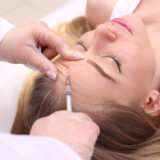
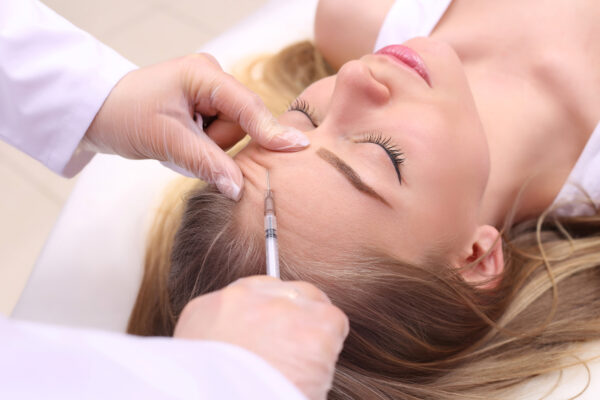
Botox injections reduce fine lines and wrinkles, making them popular in medical spas.
The beauty industry is shifting towards non-invasive cosmetic procedures, driven by technological advancements. Clients prefer treatments with visible results without surgery due to reduced risk, shorter recovery times, and lower costs. Non-invasive procedures are now essential for med spas, meeting the needs of clients seeking enhancements with convenience and rapid recovery. Med spas must adapt their offerings as demand grows to meet changing trends and client expectations.
Here are the top 5 non-invasive treatments that are highly sought after and proven to enhance client satisfaction:
Botox
Medical spas now often offer Botox injections as a popular therapy due to the noticeable improvement in the appearance of fine lines and wrinkles. Botulinum toxin injections temporarily reduce muscle tension, plump the skin, and stop the deepening of wrinkles caused by facial expressions. The treatment is helpful for people with hectic schedules because it is short, typically lasting only 10 to 15 minutes.
Only trained medical professionals are qualified to administer Botox injections safely and effectively. They undergo specialized training, like the Dentox course, to learn the proper techniques. Medical professionals can visit https://dentox.com/live-classes/ for live patient courses and https://dentox.com/all-courses/botox-training/ for online Botox training to stay updated on the latest methods and technology for administering Botox.
Botox injections appeal to a younger audience looking to prevent early signs of aging. Clients can resume their normal activities immediately after the procedure, making it suitable for those with hectic schedules. The effects of Botox last for approximately 3 to 4 months, ensuring clients return for follow-up treatments and fostering loyalty to the medspa.
Dermal Fillers
Dermal fillers address the loss of skin volume and facial contouring desires by filling in wrinkles and creases immediately. These fillers typically contain hyaluronic acid and offer temporary results, appealing to clients who are hesitant about permanent changes. Med spas can customize lip enhancement, cheek augmentation, or nasolabial fold reduction treatments, catering to individual preferences.
Laser Hair Removal
Men and women can benefit from the long-lasting results of laser hair removal. This method gradually reduces hair growth by destroying hair follicles with focused laser beams. Clients are really satisfied and keep coming back to laser hair removal since it works better than shaving or waxing. The long-term success of laser treatments guarantees a healthy return on investment for medical spas, despite the hefty price tag associated with the equipment.
Chemical Peels
Chemical peels improve complexion by exfoliating the skin’s top layers and revealing smoother, more evenly toned skin underneath. Available in various strengths, chemical peels cater to individual skin types and concerns, such as fine lines, acne scars, and hyperpigmentation. Clients appreciate the visible skin tone and texture improvement and the long-term benefits, like improved collagen formation.
Microdermabrasion
Microdermabrasion rejuvenates the skin by gently exfoliating dead skin cells and promoting the growth of new, healthy skin cells. This non-invasive procedure addresses sun damage, scars, and uneven skin texture with minimal side effects and no downtime. Clients can resume their daily activities immediately after treatment, making microdermabrasion a convenient option for skin rejuvenation.
Incorporating these top 5 non-invasive treatments into med spa menus allows them to meet clients’ evolving needs and thrive in a competitive market. Med spas can position themselves as leaders in the cosmetic care industry by providing innovative and results-driven treatments, enhancing clients’ appearance and confidence with personalized solutions.
Botox Q & A: Everything You Need to Know About Botulinum Toxin
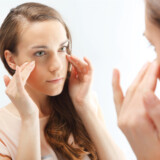
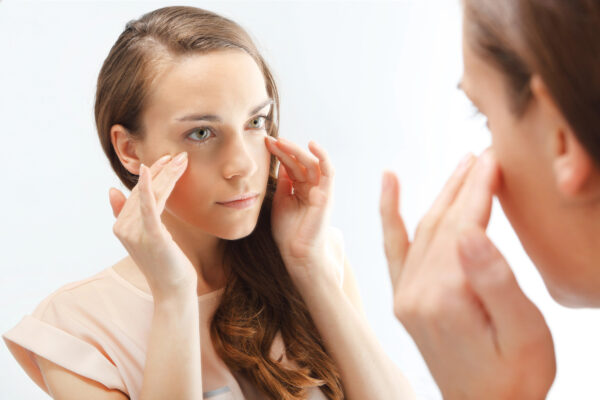
Botox works best on dynamic wrinkles, also known as expression lines.
Botox, derived from the bacterium Clostridium botulinum, is a popular injectable treatment used to smooth fine lines and wrinkles, among other cosmetic and medical purposes. This comprehensive guide will address questions and concerns surrounding Botox, its uses, preparation, and what to expect during and after treatment.
What is Botox?
Neuromodulators, like Botox, are injectable medications that block the signals that cause muscles to move. The injection of Botox temporarily paralyzes the targeted muscles by interfering with these impulses, giving the illusion of smoother and softer skin. This is why Botox is such a great way to keep wrinkles and fine lines at bay. Results can persist for months after injections, which often take no more than a few minutes. The Botox effects eventually disappear as the muscles’ range of motion and flexibility return to normal.
Can Botox treat any wrinkles?
Dynamic wrinkles, often called expression lines, are the best candidates for Botox treatment. These lines appear as a result of constantly expressing the same facial emotions, such as smiling, frowning, or squinting. Lines around the eyes (crow’s feet), the forehead, the glabellar line (the space between the eyebrows), the nose (bunny lines), the lips (marionette lines), and the horizontal bands of the neck are regular places for Botox injections. Botox can smooth out these wrinkles, giving you a younger look.
Are there other uses for Botox?
Beyond cosmetic purposes, Botox has several medical applications due to its ability to target muscle movement. These include:
- Nonsurgical brow lift: Botox can be strategically injected to lift and shape the eyebrows, creating a more youthful and lifted appearance without surgery.
- Nonsurgical lip flip: Injecting Botox into the muscles around the lips can create fuller lips by relaxing the muscles and allowing the upper lip to roll outward gently.
- Masseter muscle (jaw muscle) slimming: Botox injections into the masseter muscles can help reduce the size of the jaw muscles, resulting in a slimmer jawline and a softer facial profile.
- Temporomandibular joint (TMJ) pain relief: Botox can alleviate symptoms associated with TMJ disorders, such as jaw pain, tension, and difficulty chewing.
- Migraine relief: Some individuals experience relief from chronic migraines after receiving Botox injections, although the exact mechanism of action is not fully understood.
- Hyperhidrosis (excessive sweating) treatment: Botox injections can help reduce excessive sweating by blocking the signals that stimulate sweat glands, particularly in areas such as the underarms, palms, and soles of the feet.
How should I prepare for Botox treatment?
Most individuals do not need specific steps to prepare for Botox treatment. However, discussing your goals and expectations with your medical professional during the initial consultation is essential. Also, inform your medical professional of your medical history, including any underlying health conditions or medications you take. Avoiding blood-thinning medications or supplements before your appointment can help reduce the risk of bruising at the injection sites. Botox appointments are typically brief, lasting between 15 and 30 minutes, and your medical professional will provide specific post-care instructions based on your individual needs and the number of treatment areas.
What can I expect during and after Botox treatment?
During your Botox appointment, your medical professional will discuss your desired outcomes and map the treatment areas. Most people only experience mild discomfort during the quick and primarily painless injections. The injection sites may be red, swollen, or bruised right after treatment, but these side effects usually go away within a few hours to a few days. Botox usually takes about 7 to 14 days to take full effect, and you will begin to notice a gradual softening of the treated lines and wrinkles. The results of Botox typically last for 3 to 4 months before gradually wearing off, at which point you may choose to schedule follow-up treatments to maintain your desired results.
In conclusion, Botox is a versatile and effective treatment option for both cosmetic and medical purposes. You can make informed decisions about the right choice by understanding how Botox works, its various uses, and what to expect before, during, and after treatment. Always consult a qualified medical practitioner to determine the best treatment plan for your needs and goals.
Expert medical practitioners know all the potential dangers of injecting Botox into various facial muscles and regions. They are responsible for assessing each patient’s needs, administering Botox correctly, and monitoring their reactions to ensure they are safe and effective.
Dentox teaches medical and aesthetic professionals how to administer Botox in problem regions. You can enroll in a seminar at your leisure, either in person at one of several venues across the US or online. Visit https://dentox.com/live-courses/ and https://dentox.com/all-courses/botox-training/ for more details about our live courses and online botox training, respectively.








